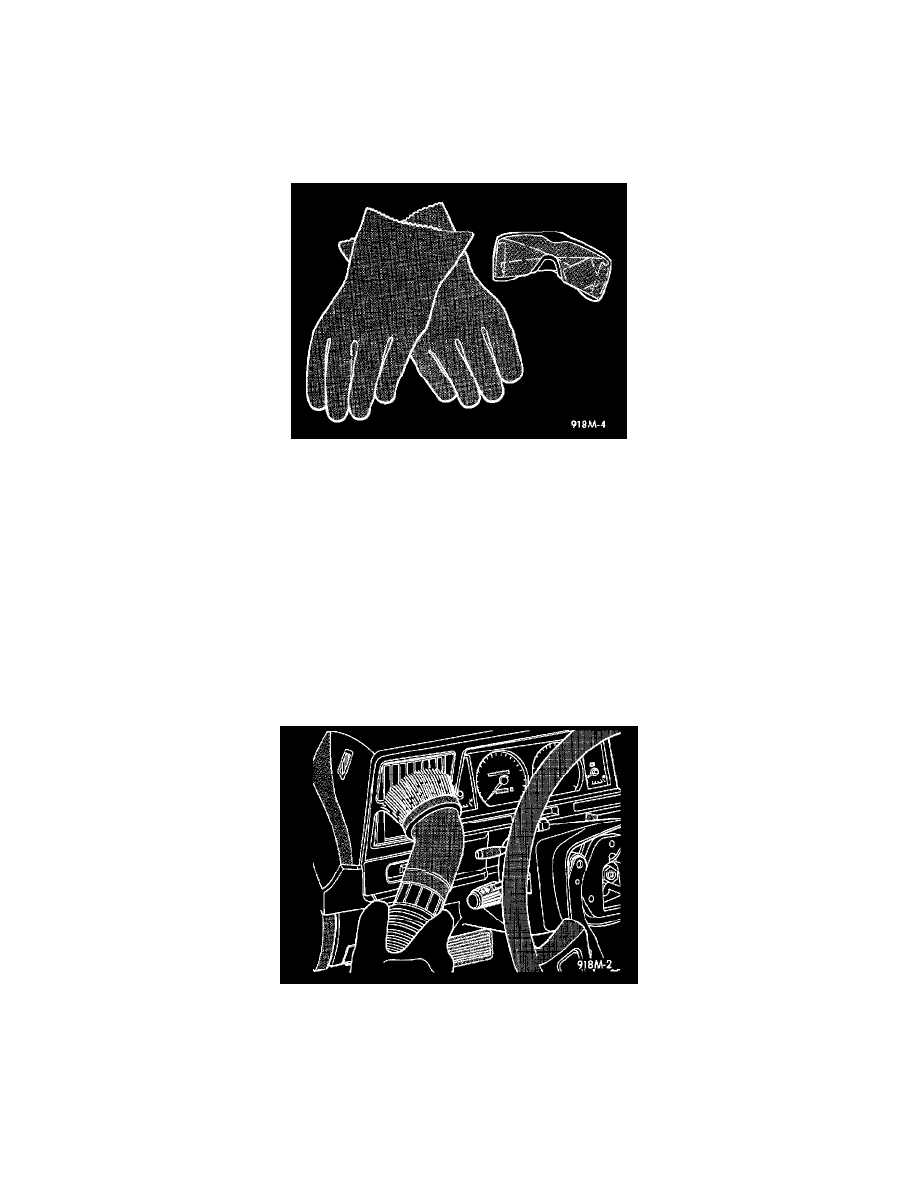RAM 1500 Van V8-5.9L VIN Z LDC (2001)

Repairs and Inspections Required After a Collision: Service and Repair
Air Bag System
Standard Procedure - Service After an Airbag Deployment
Any vehicle which is to be returned to use following an airbag deployment, must have both airbags, both seat belt tensioners, the driver airbag trim
cover, the horn switch, the clockspring, and the steering column assembly replaced. These components are not intended for reuse and will be damaged
or weakened as a result of an airbag deployment, which may or may not be obvious during a visual inspection. Other vehicle components should be
closely inspected, but are to be replaced only as required by the extent of the visible damage incurred.
Wear Safety Glasses and Rubber Gloves - Typical
Cleanup Procedure
Following an airbag deployment, the vehicle interior will contain a powdery residue. This residue consists primarily of harmless particulate
by-products of the small pyrotechnic charge used to initiate the propellant used to deploy the airbags. However, this residue may also contain traces of
sodium hydroxide powder, a chemical by-product of the propellant material that is used to generate the nitrogen gas that inflates the airbag. Since
sodium hydroxide powder can irritate the skin, eyes, nose, or throat, be sure to wear safety glasses, rubber gloves, and a long-sleeved shirt during
cleanup.
WARNING: IF YOU EXPERIENCE SKIN IRRITATION DURING CLEANUP, RUN COOL WATER OVER THE AFFECTED AREA.
ALSO, IF YOU EXPERIENCE IRRITATION OF THE NOSE OR THROAT, EXIT THE VEHICLE FOR FRESH AIR UNTIL THE
IRRITATION CEASES. IF IRRITATION CONTINUES, SEE A PHYSICIAN.
Begin the cleanup by removing both airbags and both seat belt tensioners from the vehicle. Refer to the appropriate service removal procedures. Place
the deployed airbags and seat belt tensioners in your vehicular scrap pile.
Vacuum Heater and A/C Outlets - Typical
Next, use a vacuum cleaner to remove any residual powder from the vehicle interior. Clean from outside the vehicle and work your way inside, so that
you avoid kneeling or sitting on a non-cleaned area. Be certain to vacuum the heater and air conditioning outlets as well. Run the heater and air
conditioner blower on the lowest speed setting and vacuum any powder expelled from the outlets. You may need to vacuum the interior of the vehicle
a second time to recover all of the powder.
